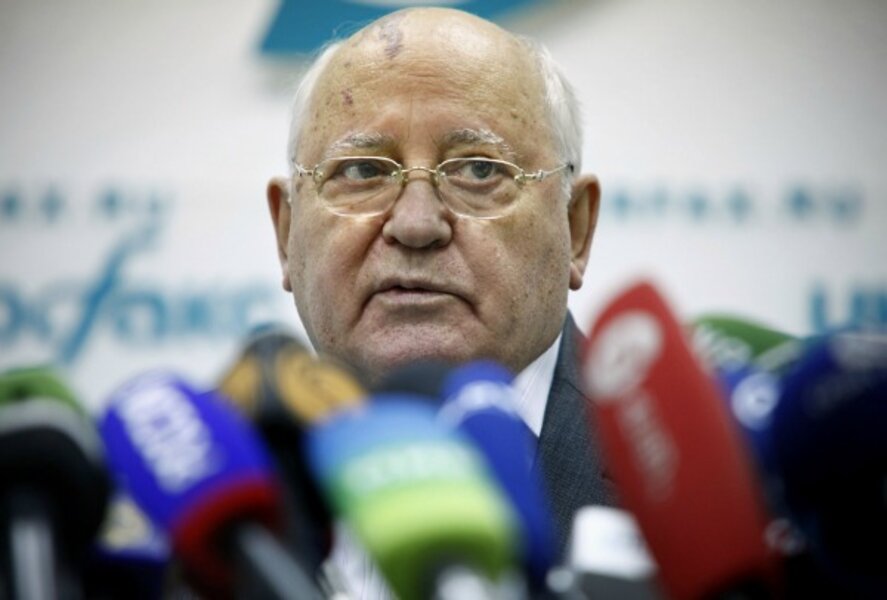Christmas gift to America 20 years ago – a Russia to be thankful for
Loading...
| Cambridge, Mass.
In a Christmas gift on Dec. 25, 1991, the Soviet Union collapsed. The “evil empire,” as Ronald Reagan rightly called it, was erased from the map. On its territory, Russia and 14 newly independent states emerged.
In the rush of the past two decades, “things have changed so fast we have not yet taken time to be astonished,” the late Czech President Vaclav Havel once observed. The tendency of bad news to drive out the good is well known. How often does a story about positive developments lead television coverage or make the front page? Vladimir Putin’s recent announcement that he will run again for the presidency (and undoubtedly win) casts a cloud that accentuates the negative.
Nonetheless, as Americans pause during this holiday season to give thanks and reflect, it is appropriate to review what has happened in the new Russia’s first 20 years. Assessed strictly from the perspective of what matters most to Americans, the good news is that the nightmares that experts realistically expected at the time have not happened.
Who imagined the Evil Empire disappearing – without war?
Who imagined US victory over its cold war rival – with a whimper rather than a bang?
Who imagined a revolution that buried communism – without blood?
Who imagined that 20 years on, not one single nuclear bomb from the entire Soviet arsenal would have been found loose outside Russia? (Recall that in December 1991, on “Meet the Press,” then Secretary of Defense Dick Cheney forecast: “If the Soviets do an excellent job at retaining control over their stockpile of nuclear weapons … and they are 99 percent successful, that would mean you could still have as many as 250 [warheads] they were not able to control.”)
Who imagined that the nation that would do more than any other over these two decades to prevent the proliferation of nuclear weapons to additional states would be Russia? (Russia took the lead, with a significant American assist, in preventing Ukraine, Kazakhstan, and Belarus from inheriting major strategic nuclear arsenals.)
Who imagined that a state that had been defined for the previous 700 years by continuous imperial expansion, having just seen its borders rolled back to lines last known under Peter the Great, would have acquired no new territory in these two decades? (To be precise, after the conflict with Georgia in 2008, Russia recognized two provinces of Georgia as new independent states. But it did not annex them.)
Who imagined that the biggest contributor to increases in global oil and gas exports that keep downward pressure on gas prices in America would be Russia?
Who could have imagined that the nation that now provides the most significant lifeline to 100,000 American troops fighting in Afghanistan would be Russia?
Who could have imagined that the only way US astronauts can get to the International Space Station today is to hitch a ride on Russian spacecraft?
Who could have imagined that Europe would be seeking euro-bolstering loans not only from China but also from Russia?
Assessment of the past two decades from the perspective of Russian citizens presents a different question. But from the perspective of impact on American national interests, despite continuing differences on issues like Iran and Syria today, this glass is certainly closer to full than to empty.
Russia remains the land of matryoshka dolls and Potemkin villages. One penetrates one layer only to discover another, each reflecting truths that compete with contradictory realities within and beyond. Two decades on, the story is unfinished. Relative to our brightest hopes, Russia disappoints today and will do so in the future. Compared to our darkest fears, we have much for which to give thanks.
Graham Allison is director of Harvard Kennedy School’s Belfer Center for Science and International Affairs and author of "Nuclear Terrorism: The Ultimate Preventable Catastrophe."





